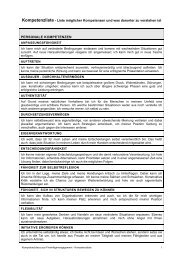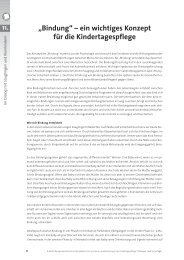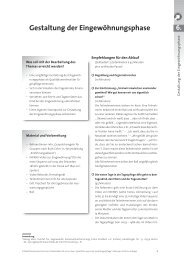download - Deutsches Jugendinstitut e.V.
download - Deutsches Jugendinstitut e.V.
download - Deutsches Jugendinstitut e.V.
Create successful ePaper yourself
Turn your PDF publications into a flip-book with our unique Google optimized e-Paper software.
Professor Howard Williamson, University of Glamorgan,<br />
Wales, United Kingdom<br />
European Youth Policy<br />
Introduction<br />
Practical programmes often exchange ideas about what<br />
constitute the essential elements of successful initiatives<br />
and interventions. These are invariably contested and I<br />
would suggest that they are a somewhat misguided quest<br />
for the holy grail. Instead, I subscribe to a view proposed<br />
long ago by Marris and Rein in their study of social reform<br />
programmes:<br />
“The whole process – the false starts, frustrations, adaptations, the successive<br />
recasting of intentions, the detours and conflicts – needs to be comprehended. Only<br />
then can we understand what has been achieved, and learn from that experience….<br />
Even though no one ever again will make exactly the same journey, to follow the<br />
adventures of the projects offers a general guide to the dangers and discoveries of<br />
their field of action” (Marris and Rein 1972, p260)<br />
This is, of course, especially pertinent in the context of any European policy agenda;<br />
even the very best ideas cannot be transported simplistically across geographical borders<br />
without careful reference to cultural, historical and political traditions as well as current<br />
approaches to policy formulation and implementation.<br />
I used the quotation above in my pioneering evaluation of what would, these days, be<br />
called a ‘social cohesion’ community initiative. In that report (Williamson and<br />
Weatherspoon 1985), the ‘disadvantaged neighbourhood’ was referred to as ‘an area of<br />
social deprivation’. The front cover depicted four separate pieces of a jigsaw – voluntary<br />
agencies [NGOs], central government, local community, and statutory agencies – and then<br />
an integrated jigsaw picture overlaid by a handshake between these sections. It was a<br />
symbolic attempt to represent the need for agencies to come and work together if effective<br />
practice was to be engendered.<br />
It is also important for grounded, local programmes to operate within some<br />
understanding of the direction of overarching policy for young people (and, of course,<br />
neighbourhood renewal and community cohesion), which increasingly has a significant<br />
European component. Understanding that framework not only allows practitioners to<br />
engage in debate about its future direction but can also assist in ‘legitimising’ their own<br />
direction of travel when regional and national frameworks may be informed by different<br />
priorities and criteria.<br />
The framework of European ‘youth policy’ – some general notes<br />
I will be selecting just a few key developments in youth policy at a European level, both<br />
from the European Union (representing 27 countries) and from the Council of Europe<br />
(representing 47 countries).<br />
99

















